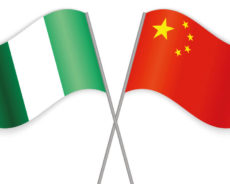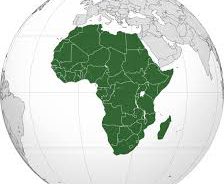
Nigeria has been named Africa’s largest economy for the second year in a row by multinational professional services network PricewaterhouseCoopers (PwC).
The auditing firm disclosed this in the latest edition of its Nigeria’s economic outlook titled: “Top 10 Themes for 2019,” distinguishing the Nigerian economy from other seven.
Nigeria led the pack in the western part of the continent with Kenya falling short to Ethiopia in the East African region. The level of competition in East Africa was quite tight with various sectors accounting for the hefty foreign investments.
Read Also: Nigeria has 11m stunted children – UNICEF
Following the recent 1.93 per cent Gross Domestic Product (GDP) growth recorded by Nigeria in 2018, as against the 0.82 per cent achieved the previous year, the federal government had beat its chest, saying it was evidence that the President Muhammadu Buhari administration’s economic policy is working.
But analysts had said the outcome only signalled the need for increased investments in the country in order to achieve better and sustainable growth.
According to Nigeria’s GDP report for the fourth quarter and full year 2018 released by the National Bureau of Statistics (NBS), Nigeria’s GDP growth rate increased to 2.38 per cent (year-on- year) in the fourth quarter of 2018 (Q4, 2018).
This indicated a 0.55 percentage rise compared to the 1.81 per cent growth recorded in the preceding quarter.
Minister of Finance, Mrs. Zainab Shamsuna Ahmed, had disclosed this while speaking on the topic ‘Revenue growth & Economic development: Expectations for 2019,’ at the Deloitte Nigeria 2019 Economic Outlook held in Lagos recently.
The minister reiterated that the government was planning higher Value Added Tax (VAT) and excise duties for carbonated drinks produced in Nigeria, “for which companies do not pay excise.”
According to her, “We still need to do more to achieve higher revenue outturn. Peer comparison on our ability to convert Gross Domestic Product (GDP) to revenue for capital and social investmentkey drivers of sustainable economic growth -show that we have a lot to do to catch up. Nigeria must mobilise significant resources to invest in human capital development and critical infrastructure.
“Indeed, some reforms will be tough, but it must be done if we will look at the facts and be frank to ourselves. Given the low revenue to GDP ratio (currently at about seven per cent), we must pursue optimal revenue generation,” she added.
Speaking further, Ahmed said the federal government’s recently launched Strategic Revenue Growth Initiatives (SRGI) aims to boost revenue generation in order to meet “our targeted revenue to GDP ratio of 15 per cent as set out in the Economic Recovery and Growth Plan (ERGP).”
The minister noted that in 2018, the federal government recorded revenue of N6.9 trillion, which according to her was unsatisfactory.
She listed some of the key achievements of the federal government to include the Treasury Single Account (TSA) implementation, IPPIS implemented across several MDAs to improve public service productivity and increase government revenue and the establishment of Efficiency Unit to cut costs and block leakages.
“We will continue to ensure fiscal discipline and optimise some revenue improvement initiatives that have been achieved thus far. By prioritising revenue generation, the federal government intends to continue significant investments in human capital and critical infrastructure to sustain the growth trajectory.








